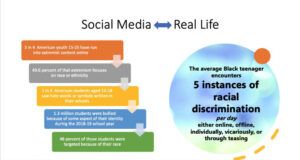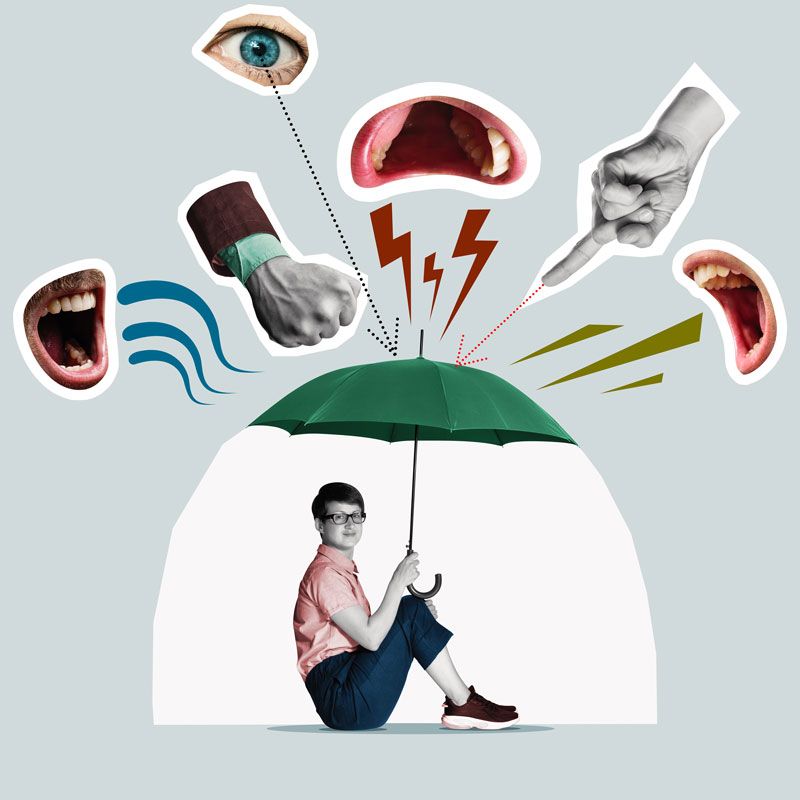Addressing School Bullying – Extinguishing the Fire
It goes without saying bullying is not welcomed anywhere, especially in a place of education. And yet, millions of students across the country, face it. Bullying can be seen in many shapes and forms, from physical violence to verbal harassment. The toll this takes on a student’s mental health is unfathomable.
In a media briefing on October 27, hosted by Ethnic Media Services, experts in youth communications and civil rights discussed the complexities of the issue, offering insights. How can we work together to prevent bullying and promote a respectful culture and make our schools feel more inclusive?
Speakers

- Becky Monroe, Deputy Director, Strategic Initiatives and External Affairs, California Civil Rights Department
- Dashka Slater, New York Times Journalist, and author
- Anahí Santos, Youth Wellness Coordinator, One Community Action
- Mina Fedor, Founder and Executive Director, AAPI Youth Rising
- Connie Alexander-Boaitey, President, Santa Barbara NAACP
- Barbra Risling, Housing Case Manager, Youth Empowerment Siskiyou Y.E.S.
Where Does it Start?
Before anything, we need to understand the root cause of bullying. As the executive director at Ethnic Media Services, Sandy Close, noted, “young people, especially those on the margins, are where the energies of the culture tend to move.” This means that students who are already marginalized due to their race, ethnicity, gender, or sexual orientation may be more likely to experience bullying. Understanding this dynamic is crucial for developing effective prevention strategies that address the underlying issues that contribute to bullying.
President of the NAACP Santa Barbara, Connie Alexander-Boaitey, proclaims bullying goes beyond school. ”Bullying is not just a problem in schools, it’s a problem in our society as a whole. We need to be thinking about how we can create a culture of respect and inclusion in all aspects of our lives, from our schools to our workplaces to our communities.”
“This means addressing the underlying issues that contribute to bullying, such as racism and discrimination, and promoting empathy and understanding among all members of our society.” The underlying issues is what really needs to be tackled, such as racial discrimination. That is where we need to start.
Now that we know a little bit more about its origin, how can we address bullying in schools? Becky Monroe answered just that, “schools have a responsibility to support the victims and not think that their work is done once they’ve punished their perpetrators.” Schools need to be proactive in preventing bullying. In recent trends, we see schools being apathetic until an instance of bullying occurs. Schools must not only take care of the situation but then also provide resources and support for those bullied.
Bullying Using Social Media
Social media plays a role too, but not in a good way. As Dashka Slater, a journalist and author, noted, “media literacy for students [is] helping students understand and identify when racist or other bigoted tropes are coming towards them on social media.” Schools need to prioritize digital literacy education and provide students with the tools they need to navigate the complex world of social media. We can start by teaching students how to identify and report cyberbullying and online harassment.

Proposed Solutions
Addressing bullying is no walk in the park, but at least there are many promising initiatives to make a difference. One such is the Stop the Hate Initiative, supported by the California Civil Rights Department and the state libraries. They provide resources and support for schools and communities to address hate crimes and bullying. As Sandy Close noted, “we want to create a culture of respect and inclusion, and the Stop the Hate Initiative is one way to do that.”
Another promising strategy is the use of restorative justice practices in schools. Becky Monroe noted, “restorative justice is a way of addressing harm that has been done in a way that is not just punitive, but is also about repairing relationships.” Instead of simply punishing students who have been bullied, they brought together the victim and the perpetrator to converse and work towards repairing what has been done. Punitive measures are seen as less effective. Restorative justice helps address the underlying issues that contribute to bullying.
Everyone must do their part. From parents to administrators, from students to teachers, each and every one of them have a role to play. Additionally, bullying is such a complex issue, that it cannot be taken lightly. The have to stray from the simpler ways and adhere to a multifaceted approach.
Dashka Slater stressed that we need to think about “how we can create a culture of respect and inclusion in our schools, and that means involving everyone in the conversation.” Implementing policies and programs that promote respect and inclusion is one way of doing it. Prioritizing digital literacy education to help students navigate the deep ends of social media is another. Whichever route we take, certainly, we can’t go about in a single track.
No one should be fearful when going to a place of learning and education. Bullying in schools is complex, requiring a nuanced approach. With understanding the root causes of bullying, prioritizing prevention and support, and involving everyone in the school community, we can work towards creating a better learning ecosystem for all students. As Sandy Close noted, “we need to be thinking about how we can create a world where everyone feels valued and respected, and that starts with our schools.”


